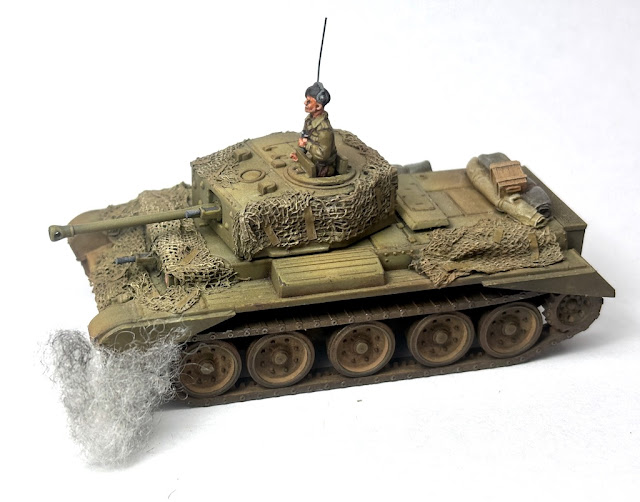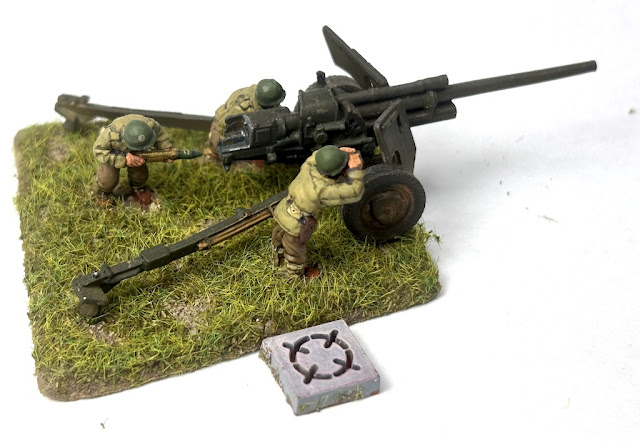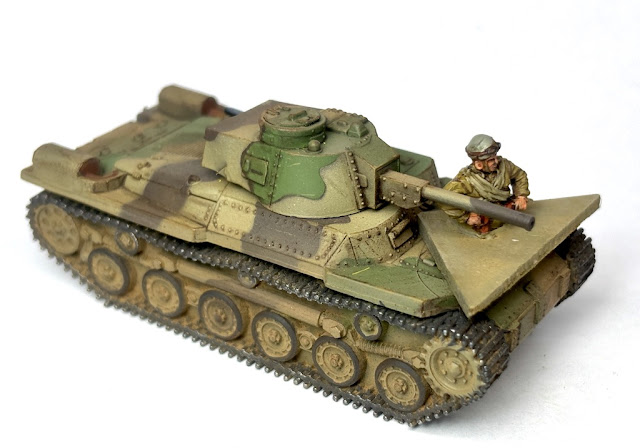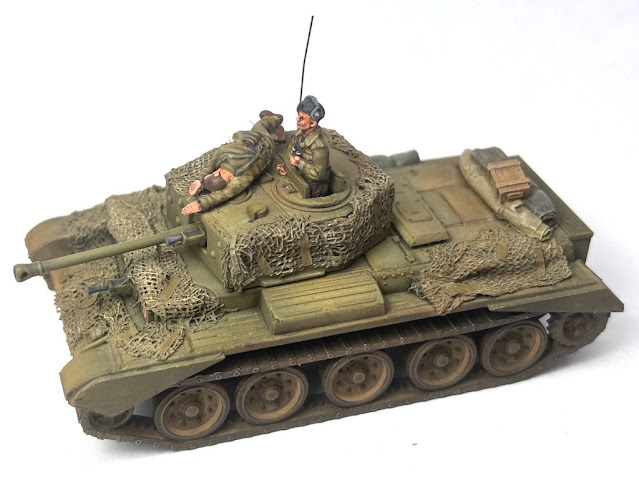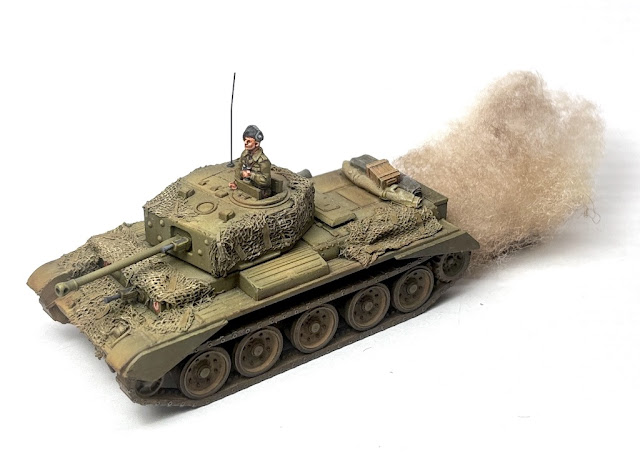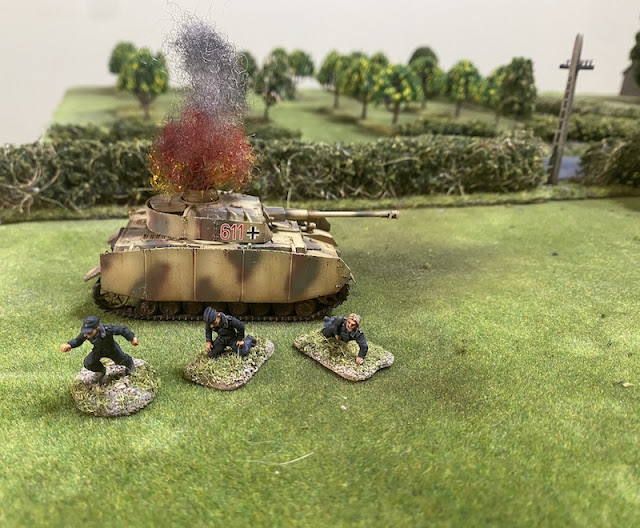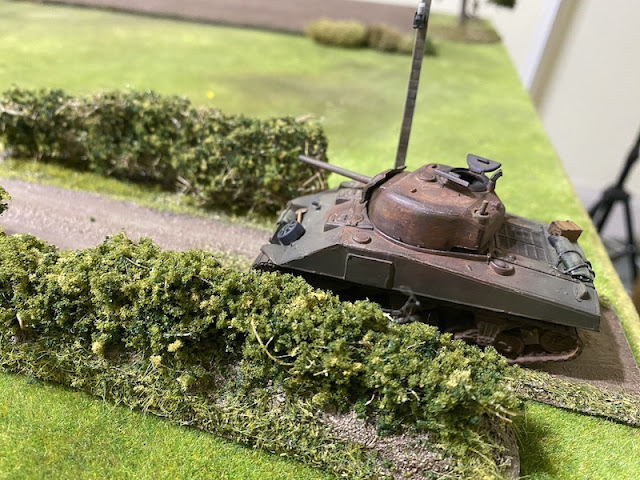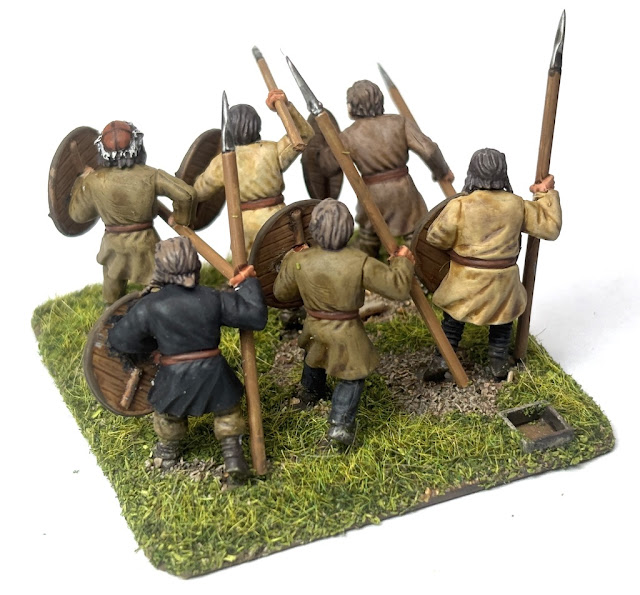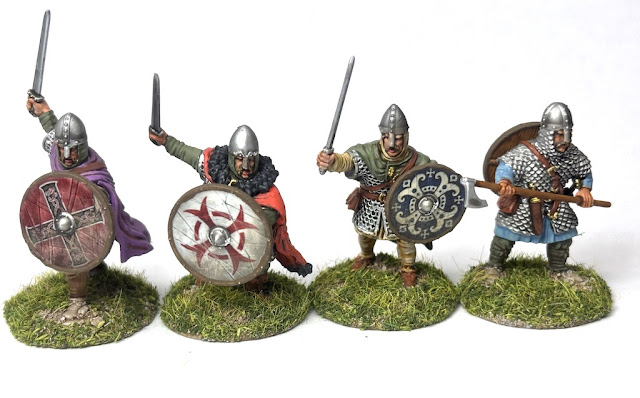Yes indeed, I have a Saxon warband. How did this happen?
Let's just step back a few months. Regular readers may recall that earlier this year I added Victrix Germanic tribes heads to six figures from a Gripping Beast set of Dark Age Warriors to make up a group of slingers for my Infamy, Infamy! project.
Those Gripping Beast figures were bought at the same time as a box of their Vikings and Saxon Thegns. This was a few years ago, when we first heard about the Saga rules from Studio Tomahawk. It turned out those rules were not my cup of tea and so the figures were consigned to the stash. In fact, I sold the Vikings and Saxon Thegns at a Bring & Buy a few years later, as I had no apparent need for them. I hung on to the Dark Age Warriors, imagining they might be useful to make up groups of warrior infantry for Lion Rampant. Not that I did much about it, they lingered in storage for some time.
Putting together the slingers was the motivation I needed to do something with the remaining figures. I had a few sets of Little Big Men shield transfers for the Saxons and so I used those as part of the project. My initial impression of the Gripping Beast figures was not great, especially when compared with the lovely Victrix figures I had just been working on. As a result, I decided I wouldn't base them individually, they would look better packed tighter together using multi-basing instead of sabot bases.


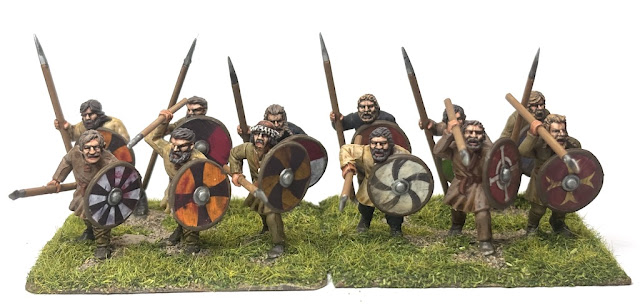
While multi-basing can be restrictive, I tried to think about making the figures as versatile as possible for different rule sets. A group of warrior infantry/light infantry in Lion Rampant is twelve figures, a group of warriors for Dux Britanniarum is six figures, and, a base width for Midgard is 120mm. These were all rules that I might consider using. So, the solution was six figures to a 60mmx60mm base. Two bases would give me the right width for Midgard or a group of twelve for Lion Rampant. As both Lion Rampant and Dux Britanniarum require casualty removal, I would include a mini-dice frame on each base to record losses.
That gave me enough figures for six bases, with a couple of figures to spare.
I wasn't happy with the original slingers and ended up converting Victrix figures to make these for the German tribe. At the same time, I added a group of archers to the tribe using Victrix's Dark Age Archers set. It occurred to me that their clothing closely resembled the Gripping Beast figures.
As these were for my Infamy, Infamy! project, they were based individually. It then occurred to me that, four archers or slingers are part of a warband in Dux Britanniarum. I could make up 60mmx60mm sabot bases for Midgard to accomodate two figures each for skirmishers. Six archers/slingers or a mix of these would work as skirmishers/archers for Lion Rampant. Just to be safe I thought I should add another half dozen archers from the Gripping Beast set.
Suddenly, I had the makings of an early medieval warband. Not Dark Age note, I'm hip to the new terminology. So, with archers, slingers and warriors carrying Saxon shields, it would make sense to add groups of Thegns. Before I knew it, three frames of Gipping Beast Saxon Thegns were in the cart (yeah, I know, I know, I sold the original set I had).
That gave me more than enough to make up three groups of warriors and two of hearthguard for a Saxon warband for Dux Britanniarum.
I had the warriors, I had the archers, all that was missing were suitable figures for the nobles. That was an easy enough fix. I tracked down a single frame of the Gripping Beast Saxon Thegn command and a similar single frame of Victrix Saxon command. The Gripping Beast figures (below) obviously fit in well with the existing warrior figures.
I like the Victrix figures, but was a little concerned at first, as they were noticeably bigger than those from Gripping Beast. That said, they are lovely figures. They gave me an impressive warlord and his champion.
The starting warband for
Dux Britanniarum requires a Warlord, his champion and two nobles. The Victrix figures gave me those.
My initial concerns on figure sizes didn't appear so bad once they were painted and based. Here below, the Gripping Beast commander (second from right) is not too obviously smaller.
Generally, the larger size is not noticeable, even when they are with the groups of warriors.
Although, it does depend on the angle. In the pictures below, it is more obvious.
So, there you go, suddenly, hey presto, there's a warband for Dux Britanniarum.
With thirty six based warriors that also gives me three units of warrior infantry for Lion Rampant.
When added to two units of Elite Infantry that then gives me an early Anglo-Saxon warband for that rule set.

Now, it gets worse. Making up the GB Dark Age Warriors gave me more figures than I would need for a Saxon warband for Dux Britanniarum, in fact, I've worked out that if I were to buy another twenty or so figures of Romano-British or Arthurian types, that would give me enough figures for both opposing warbands for Dux Britanniarum. Hmmm, twenty figures, that's not a lot now, is it......
Of course, all of this makes little sense. Dave and I have been playing a Dux Britanniarum campaign quite happily using his figures. While I do have other gaming opponents, I'm not at all certain I need all these. But hey, who am I kidding, this is an illness, as much as it is a hobby. I need them.








